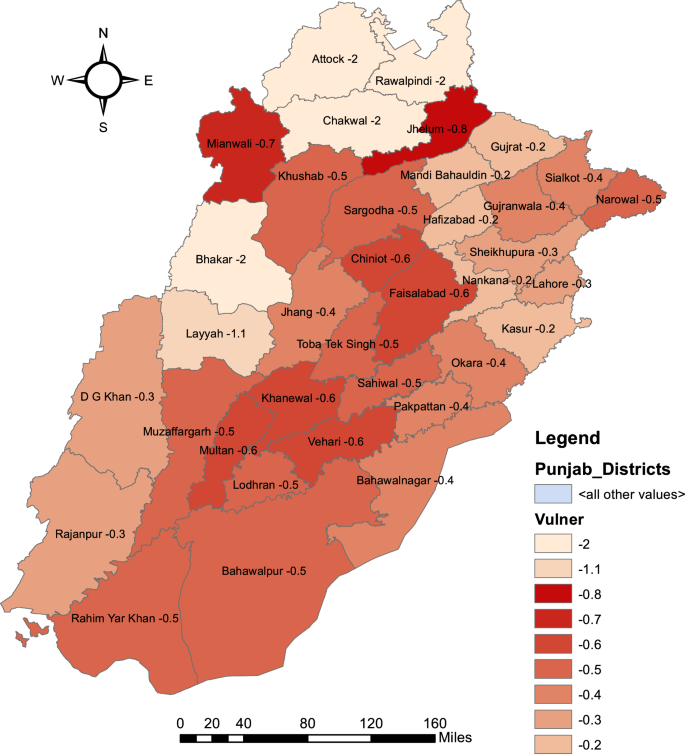The paper suggests that a careful examination of the timing of sowing and cutting is of growing relevance due to the increase in temperature. Farmers know it well, but this paper quantifies the loss in case of delays. In Pakistan, the researchers found that farmers should sow rice by the end of May and harvest it by the end of September.

Main Results
A study on rice yields in Pakistan showed that postponing sowing and cutting for a one-time scale may curtail the yield by 0.345 and 0.956 kg/plot (above 170 kg/acre). The researchers wrote it in “Identification of climate induced optimal rice yield and vulnerable districts rankings of the Punjab, Pakistan,” published in Scientific Reports.
The researchers found that, in Punjab, it is optimal to sow rice by the end of May and harvest it by the end of September. The more the sowing and the cutting are delayed, the more the rice yields decline. The four researchers found that delays in harvesting are impacting on the rice yields more than the delays in sowing.
“Model 1 estimates the rice yield of 1969.33 kg/acre for crop sown and harvested in reference time periods (i.e. sown up to May 31 and harvested up to September 30). Deviation in cutting time from this reference group the rice yield may decline by 179.33 kg/acre if harvested in the first half of October, 300.40 kg/acre if harvested in the second half of October, 450.40 kg acre if cutting in the first half of November and 441.33 kg if harvested in the second half of November. Deviation in sowing time from the reference/base group the rice yield may decline by 90.53 kg/acre if sown in the first half of June, 120.13 kg/acre if sown in the second half of June, 135.48 kg/acre if sown in the first half of July, 178.67 kg/acre if sown in the second half of July and 286.93 kg/acre if sown from August onward,” reads the paper published in December 2021.
During 2010–2017, the rice cultivation area declined about 10 percent with a reduction of 6.8 percent in rice yield, which is mainly associated with climate variation, said the researchers in their paper.
They then explained that the gravity of the impact depends on the warming rate, its duration, geographical region, and vulnerability stage.
Background
Pakistan, which exports more than 8% of global rice, was the 8th most vulnerable country to climate change by the Global Climate Risk Index in 2021.
“By 2050 Pakistan may face 19.5 billion dollars climate change loss from less output of wheat and rice crop,” wrote the researchers in the 2021 paper.
However, the following report version revealed that Pakistan was the most affected country in 2022, followed by Belize, Italy, Greece, Spain, and Puerto Rico.
The province of Punjab produces over 60 percent of the country’s rice. The percentage goes up to100 for Basmati rice.
Temperatures in Pakistan have registered record-high levels over the last few years.
Global background
Academic research reports that the average temperature for rice growth is 20–25 °C, and temperatures beyond the upper limit reduce the grain size and weight by shortening the grain filling/development time duration. Other researchers suggested that a 2.8 °C increase in temperature would reduce rice yields by 17%.
Researchers also pointed out that rice development is susceptible to temperatures above 35 °C and predicted a 40% reduction in rice yield at the end of the twenty-first century due to climate variation.
While global food production needs to grow around 70% by 2050 to meet the increasing population’s needs, cereal yield is expected to decline up to 30% by 2050. Rice represents 20% of humans’ total calorie intake. “
The study: methodology
The researchers worked with a dataset consisting of 13,663 observations coming from the Agriculture Department of Punjab, which uses systemic random sampling.
They selected 1240 representative villages of the province. Sowing time starts from May to August and is divided into six time periods.
The researchers resorted to regression analysis through an econometric model, considering yield as a function of sowing and harvesting seasons, controlling for other factors, including crop varieties, seed certification, seed treatment, irrigation mode, plough machine, sowing mode, sowing machines, harvesting machine, crop rotation, seed quantity, watering, and usage of urea, diammonium phosphate (DAP), fertilizer, and manure.